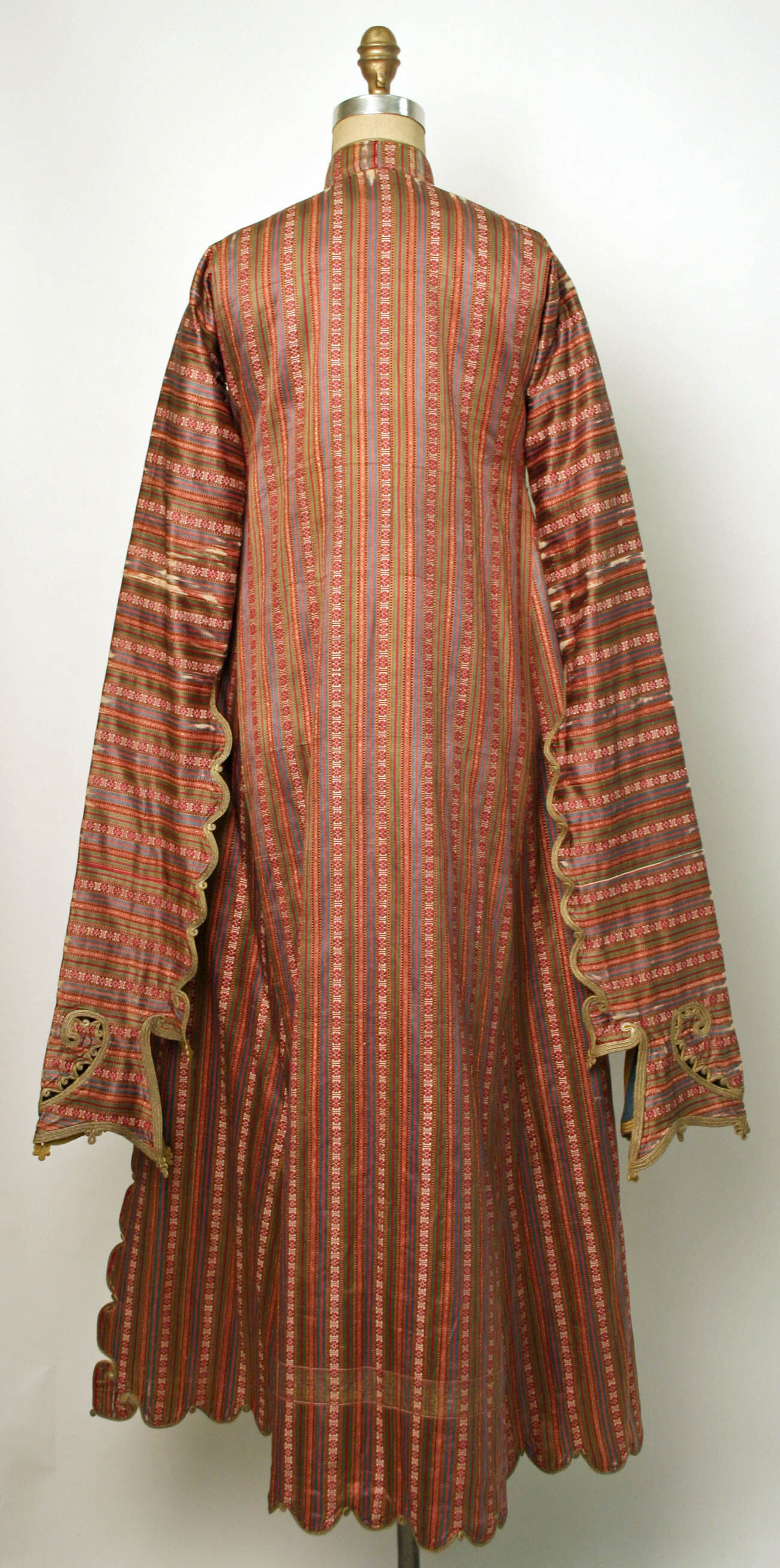Uçetek Entari or Three-Skirt Robe
Not on view
This üçetek entari or three-skirt robe with a low neckline and long sleeves with elaborately decorated ends is characteristic of an Ottoman woman’s fashionable outfit of the later nineteenth century, worn by women of middle and upper classes on special occasions. The sleeves of this robe are only seamed from the underarm to the elbow, from which they would hang and reveal the plain lining in blue satin silk. This juxtaposition also creates a colorful contrast with the decoratively striped fabric, woven in vibrant colors. Typical for entaris, the front is open, revealing parts of its printed lining in white and blue with repeating leaves. The long undershirt (gömlek) would be partly visible along the arms or the neckline. A belt with a decorative girdle clasp or a fine sash would hold the entari together at the waist.
The overall shape and particularly the striped fabric, with narrow stripe sections, some of which include a repeat floral motif, compares with examples worn in Istanbul and other parts of Anatolia. Bought by the previous owner in Dubrovnik (modern Croatia) in 1938, this entari reflects the Balkan connection and reflects the taste of women from the Balkan communities. It is defined by a pronounced U-shaped neckline and a slightly wider skirt profile. The robe’s long sleeves with deep slits and curvilinear edges that terminate in decorative cuffs add to its elegance and sophistication. The cuffs are particularly decorative with pronounced scalloping and include a cut-out in the shape of a semi-palmette, as well as levy-points to mark the tips of the cuffs.
Due to rights restrictions, this image cannot be enlarged, viewed at full screen, or downloaded.
This artwork is meant to be viewed from right to left. Scroll left to view more.



